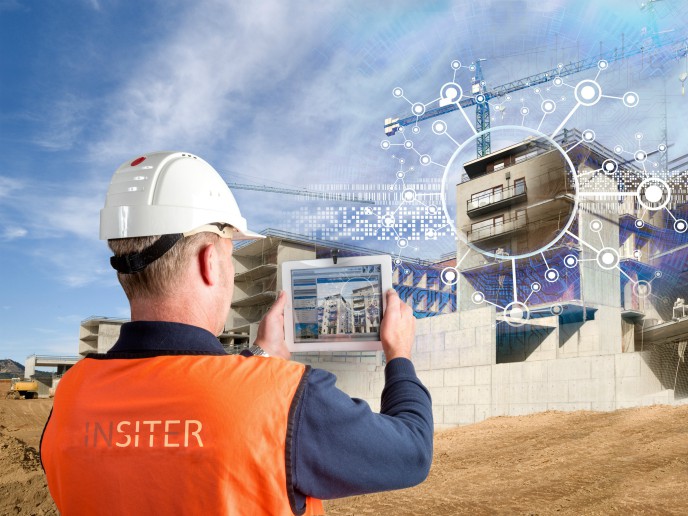Augmented reality realised in construction
The building sector accounts for 40 % of energy use in the EU. The Energy Efficient Buildings project, a joint initiative of the European Commission and the construction industry, was created to reduce the projected energy use in buildings in 2030 by 50 % using today’s best practices and technologies. Buildings rarely meet their energy efficiency and quality expectations. The EU-funded project INSITER was established to close the gap between the predicted and actual energy savings of energy-efficient buildings based on prefabricated components. INSITER presented a set of advanced tools and methodologies that prevent or significantly minimise energy losses caused by faulty assembly of the building components or defective installations of mechanical, electrical and plumbing systems during the construction phase. “Our forward-looking concepts rely on on-site inspection processes during the construction phase as opposed to the traditional post-inspection approach,” notes André van Delft, CEO and founder of DEMO Consultants, the Netherlands-based company that coordinated INSITER. Real-time review of building construction Augmented reality’s presence may be more common in the entertainment and video game industries. Yet, its application has plenty of benefits for the construction industry. Instant access to a digitised database allows inspectors to accurately compare what is being built against the building information model (BIM). Problem areas are thus easier to recognise and serious concerns can be identified and resolved instantly. “The key innovation of INSITER is the development of intuitive and cost-effective tools for self-inspection with the use of augmented reality. Unlike virtual reality which creates a totally new and independent environment of the real world, augmented reality takes a 3D model and combines it with real-time information from the building,” notes van Delft. Combining virtual architectural designs with the reality of the building site increases efficiency and accuracy, reduces errors and saves time, money and resources. “What’s more, augmented reality can be integrated with mobile applications that make triangulation calculations from geospatial information, global and indoor positioning systems, enabling users to access it on smartphones or tablets,” adds van Delft. Intelligent 3D computer models Even the most sophisticated visualisation technology depends on the quality of the data underpinning it. This is where BIM comes in. The BIM tool helps create and manage information, allowing teams to use a coherent system of 3D computer models and its relevant information rather than separate sets of documents or drawings. Having the same spatial understanding of the built environment enables architects, contractors and structural engineers to work more collaboratively when accessing and updating the design and therefore reduces failure costs. INSITER offers users the opportunity to display enhanced planning data from measurement and diagnostic instruments by integrating them with BIM. This includes data collected from 3D laser scans, thermal imaging cameras, and acoustic and vibration detectors during INSITER’s field demonstration activities. Project members updated the computer models throughout the entire lifecycle of the buildings, even after completion, to assess maintenance. Demonstration cases included a rooftop extension of a healthcare centre in Germany, refurbishment of a school complex in Italy, monitoring performance of a newly constructed office building in Spain, and renovation of a university building in the Netherlands. Combining several cutting-edge technologies, application of INSITER could considerably reduce the mismatch of energy performance between the design and commissioning stages of a building. These should help avoid costly mistakes while ensuring good build quality and optimal energy saving throughout the entire building lifecycle.
Keywords
INSITER, construction, augmented reality, building information model (BIM), self-inspection, computer model, lifecycle, DEMO Consultants, energy efficient buildings







